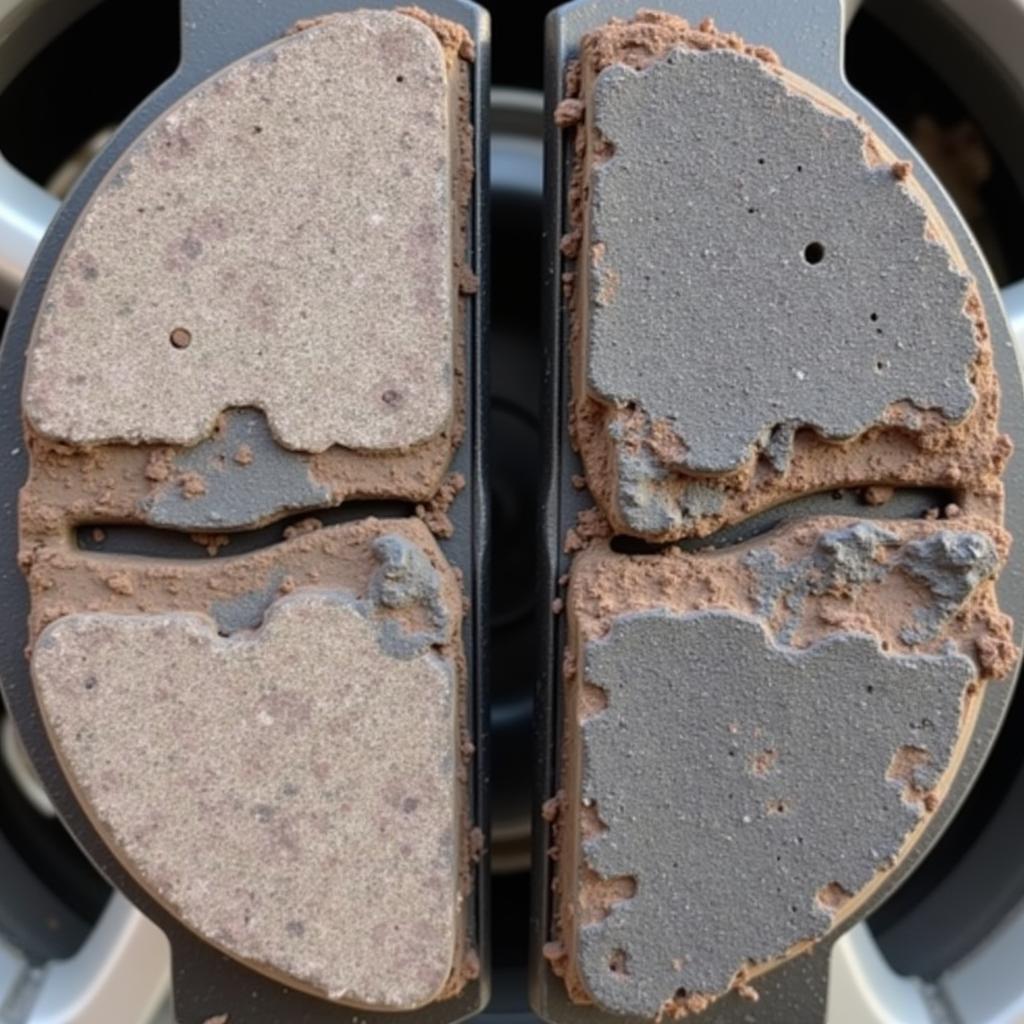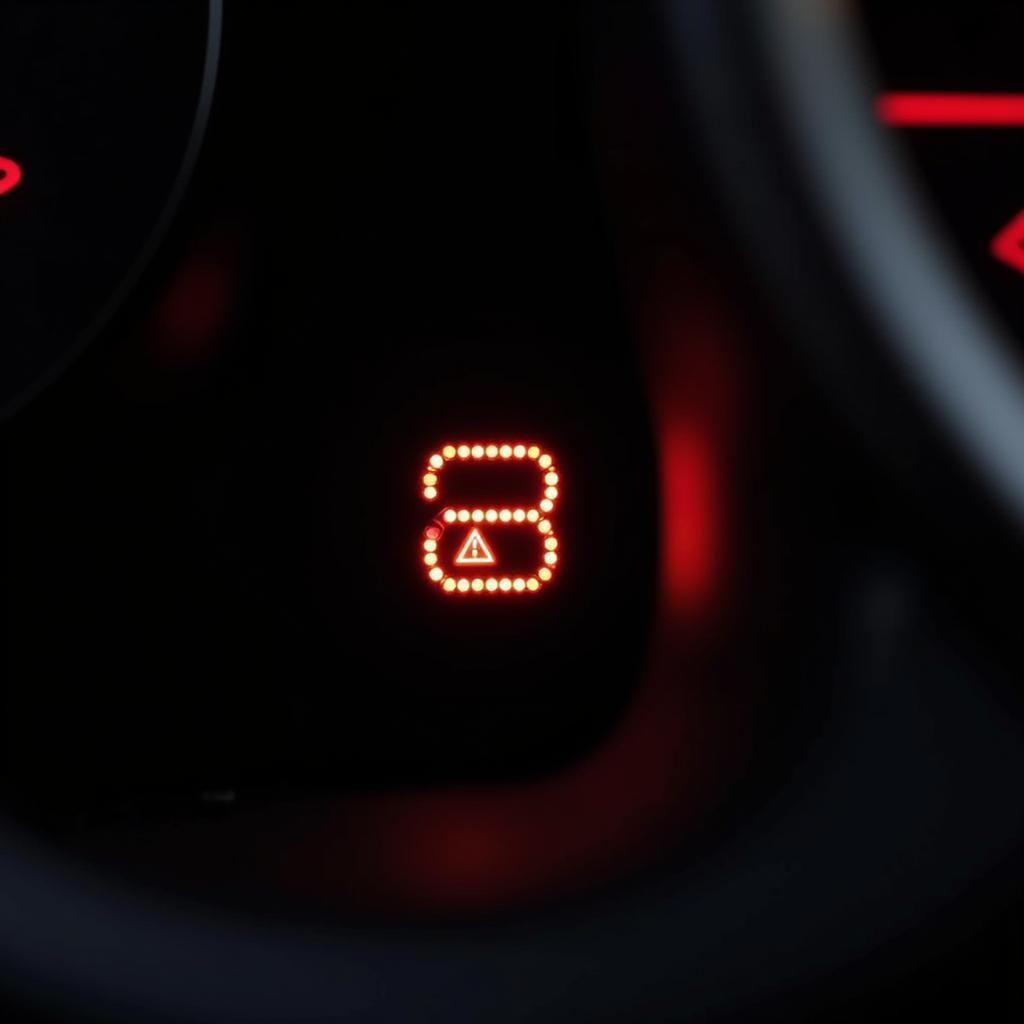The brake warning light on your dashboard is a crucial safety feature, and when it illuminates in your 2002 Dodge Grand Caravan, it’s essential not to ignore it. This light signals a potential issue with your braking system that requires immediate attention. While it can be unnerving to see this light, understanding the common causes and solutions can help you address the problem effectively.
Common Causes of a 2002 Dodge Grand Caravan Brake Warning Light
Several factors can trigger the brake warning light in your 2002 Dodge Grand Caravan. These range from simple issues like low brake fluid to more complex problems with the braking system components. Here are some of the most common culprits:
- Low Brake Fluid: This is the most frequent cause of an illuminated brake warning light. Brake fluid naturally depletes over time, and a leak in the system can significantly reduce fluid levels, triggering the warning light.
- Worn Brake Pads: Your brake pads are designed to wear down gradually with use. When they reach a certain thinness, the brake pad wear sensor will activate the warning light, indicating it’s time for a replacement.
- Faulty Brake Light Switch: The brake light switch, located behind the brake pedal, is responsible for turning on your brake lights when you apply the brakes. If this switch malfunctions, it can disrupt the brake light circuit and trigger the warning light.
- ABS Issues: If your 2002 Dodge Grand Caravan is equipped with an Anti-lock Braking System (ABS), a problem with the ABS module, wheel speed sensors, or related wiring can also illuminate the brake warning light.
- Parking Brake Engaged: While seemingly obvious, sometimes the simplest solution is overlooked. Ensure your parking brake is fully released, as leaving it even slightly engaged can trigger the warning light.
Troubleshooting Your Brake Warning Light
Before heading to a mechanic, you can perform some basic troubleshooting steps to identify the potential cause of the brake warning light:
- Check Brake Fluid Level: Park your vehicle on a level surface and locate the brake fluid reservoir under the hood. Check the fluid level; it should fall between the minimum and maximum lines. If the fluid is low, adding more might temporarily resolve the issue, but you’ll need to identify and address the underlying cause of the low fluid level.
- Inspect Brake Pads: If you’re comfortable with basic car maintenance, you can visually inspect your brake pads. Look for significant wear and tear. If the pads appear thin or worn down, they likely need replacement.
- Examine Brake Lights: Have someone press the brake pedal while you check if all brake lights are functioning correctly. If the brake lights aren’t working, the brake light switch might be faulty.
When to Seek Professional Help
If your troubleshooting doesn’t reveal a clear solution or if you’re uncomfortable working on your vehicle’s braking system, it’s crucial to seek professional help. A qualified mechanic can diagnose the problem accurately and perform the necessary repairs.
Driving with an illuminated brake warning light can be dangerous. Remember, your brakes are a critical safety system, and ignoring this warning light can lead to brake failure, potentially resulting in an accident.
What does the brake warning light indicate?
“The brake warning light is a powerful indicator that something isn’t right with your braking system,” says John Smith, a certified automotive technician with over 20 years of experience. “It’s crucial to address the issue immediately to ensure your safety and the safety of others on the road.”
Preventive Maintenance for Your Braking System
Regular maintenance is key to preventing brake problems and ensuring the longevity of your braking system. Here are some preventive measures you can take:
- Regular Brake Fluid Flushes: Brake fluid absorbs moisture over time, which can reduce its effectiveness. It’s recommended to flush and replace your brake fluid every 24,000 miles or as recommended in your owner’s manual.
- Timely Brake Pad Replacement: Don’t wait for your brake pads to wear down completely before replacing them. Follow the manufacturer’s recommended replacement intervals or have them inspected regularly by a mechanic.
 Worn Brake Pads on a 2002 Dodge Grand Caravan
Worn Brake Pads on a 2002 Dodge Grand Caravan
Conclusion
The brake warning light in your 2002 Dodge Grand Caravan is a signal that should never be ignored. By understanding the common causes, performing basic troubleshooting, and seeking professional help when needed, you can address brake problems promptly and ensure the safety and reliability of your vehicle. Remember, regular maintenance is crucial to prevent future brake issues and keep your Grand Caravan running smoothly.

